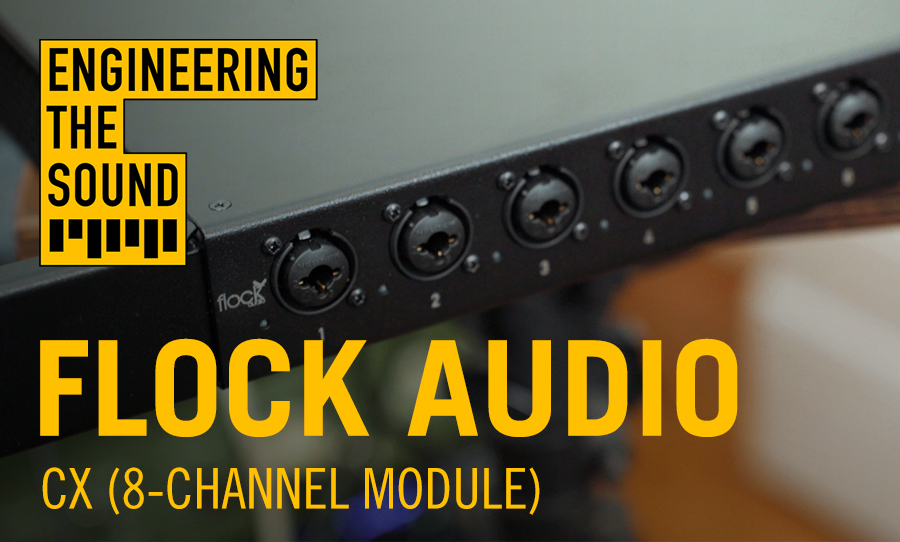Immerse by Embody allows you to enhance the spatial audio of your game with simulated surround sound, but does it actually help? We test it out.
Whether or not it’s a passing trend or a giant leap forward in immersive storytelling, spatial audio is currently one of the hottest topics in the tech world.
From Sony’s new 3D speakers to Apple Music embracing Dolby Atmos, there has been a major upswing of companies that have been integrating immersive audio into their design philosophies – and it’s finally beginning to seep into the realm of gaming.

Enter Embody, an “audio lifestyle technology company” that has focused a large portion of energy over the past few years into personalising and customising the way we interpret audio. There are a couple of companies floating around like this at the moment, such as Sonarworks (whose SoundID reference kit we’ve recently tried out), but Embody sets itself apart with an algorithm that crafts a personalised audio profile around the headset that you’re using, and the shape of your ear.
In one of the more interesting audio setups we’ve tried, the first step of using Embody’s software called Immerse Gaming | HIVE requires you to take a photo of your ear. Using your smartphone and a QR code on your computer, snap your cute ear pics and Embody’s AI algorithm will begin to customise your EQ profile based on the photo.
After this, all you need to do is select the headphones you are using from their long list of templates, and you’re away. They’ve already mapped out the audio profiles of some of the most popular gaming headsets (from producers such as Audio-Technica, Beyerdynamic, and Logitech), but also have a generic template should your cans not make the list.
And with all of that information, they can begin to interpolate your audio.
From here, Immerse acts act as a proxy surround sound mixer, creating channels within your headphones to simulate audio in up to 7.1 surround. It takes the locational audio from the game that you’re playing and applies a set of filters to it to increase the distinction between sounds sent to the left and right, front, middle and rear channels, with an extra channel in the centre, and an LFE send for any boomy explosion sounds.
It also includes a sonar map, which gives you a 360-degree visual of where the sounds are coming from, and three different preset modes which you can easily toggle between, should you wish to boost the audio of close, mid-range, or far away sounds.
We tried this software on a couple of titles and had some surprisingly good results with it. What could’ve been passed off as a gimmicky way of side-grading our soundcard actually saw us get a leg up in some contexts.
Dark Souls
This is where the “close combat” preset came in handy for us. Making our way through Lordran, the spatial audio mix that Immerse provided let us engage with the space in a new and intimidating way.
Firebombs in the Undead Burg and giant boulders in Blighttown felt like they were really careening into us, and the boosts to the back channels really helped us discern which direction to roll in while running away from bosses.

Subnautica
Using the ‘Awaken’ template, Immerse allowed us to get a more general sense of the whole underwater world of Subnautica.
We could hear stalkers chewing on creepvines from further away than normal, which helped give us a sense of location in the seascape, and stopped us from getting lost.

Overwatch
While it was cool to be slightly more immersed in the previous game worlds, it wasn’t until playing Overwatch that we could discern the true competitive potential of this app. Using the ‘Immerse’ preset, the spatial audio profile made it so much easier to sense where enemy footsteps, gunfire, and ability sounds were coming from, and made us all the more deadly for it. Being able to gather a full sense of 360-degree space gave us a competitive advantage in anticipating enemy positions.
Hearing footsteps when rounding corners let us take out any enemies straight away, and having the back channels boosted saw any gankers cop one of Reaper’s shotguns to the face.
In all honesty, it felt like a bit of an unfair advantage, knowing that we had an integral piece of information that the other players might not – and it was clear how instrumental this software would be in a game where location-based sound is everything (such as Warzone, Valorant, or Fortnite).

SOMA
However, one of the biggest drawbacks we found in the spatial audio software was that it simply overdid it when games were already designed to be immersive. Frictional Games had already placed a large amount of emphasis on SOMA’s sound design, from the fabric-rubbing effects of your underwater suit travelling with you to the clangs of locker doors slamming open.
The stereo soundscape is already developed to generate such immersion that Embody’s software just made everything a bit too intense. The filters ended up mostly prioritising the harsher sounds and crushed the voice tracks to such an extent that the off switch became the best preset for this context.

In all, the highlight of this software is its competitive edge. While it is good to have an additional sense of sound in a few contexts, Immerse is designed to boost the locational audio that the game already has.
So while this is great for certain games that lack that in-depth audio treatment, we’d probably advise you to use the soundscape that the designers intended otherwise. But if you need that extra bit of information about your in-game surroundings and think that surround sound emulation will provide it, Embody has produced a great tool.
Find out more about Embody and Immerse here.



